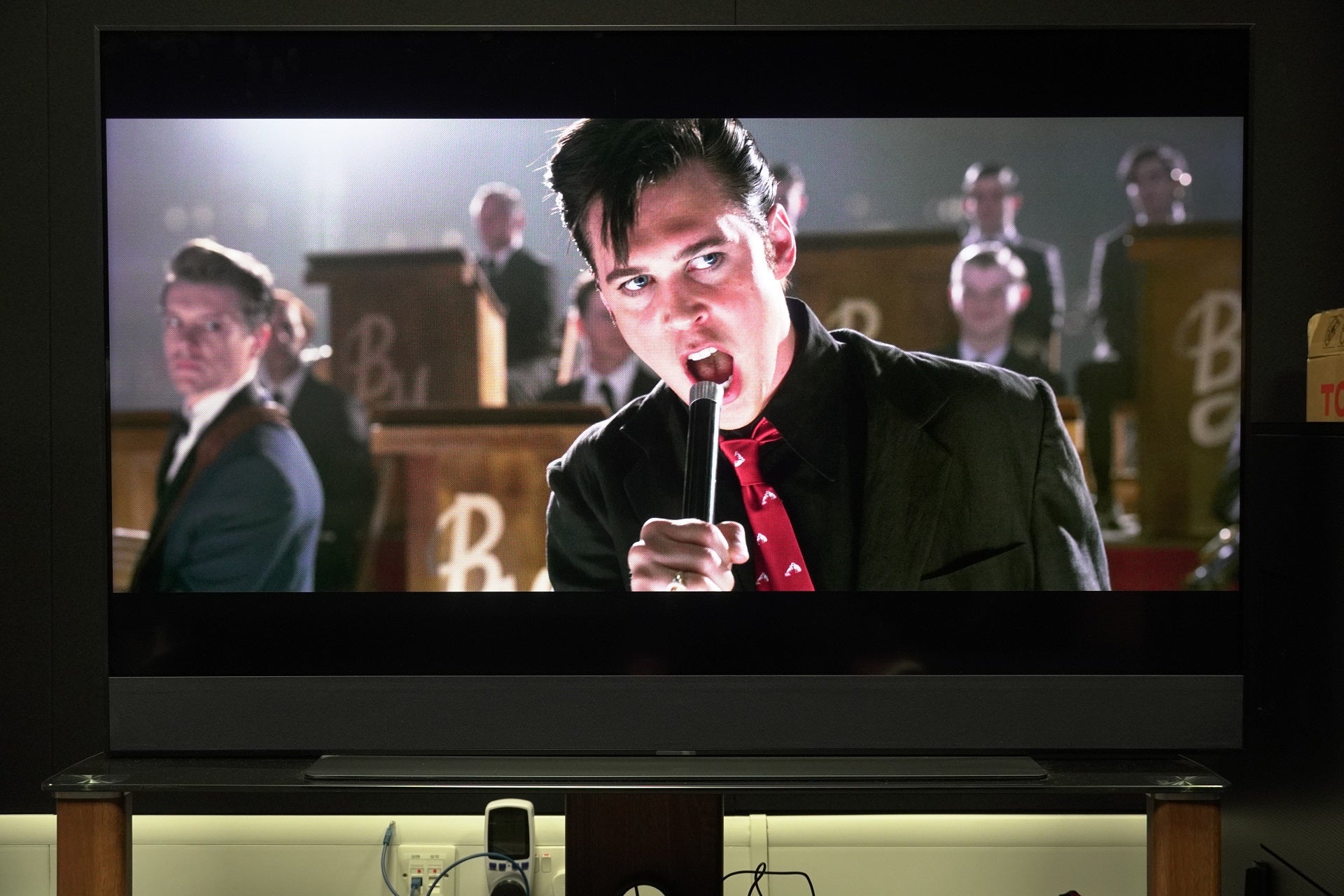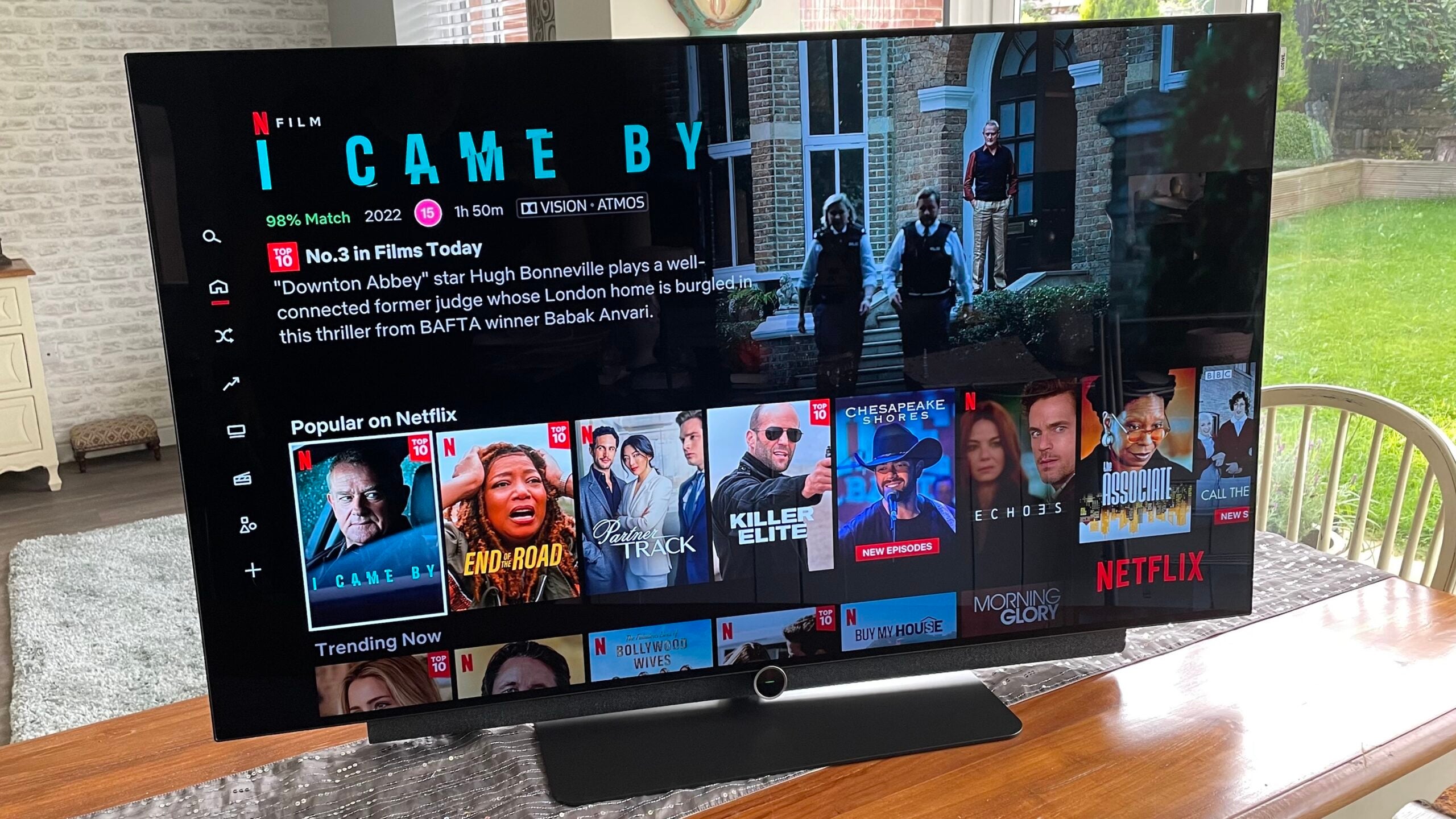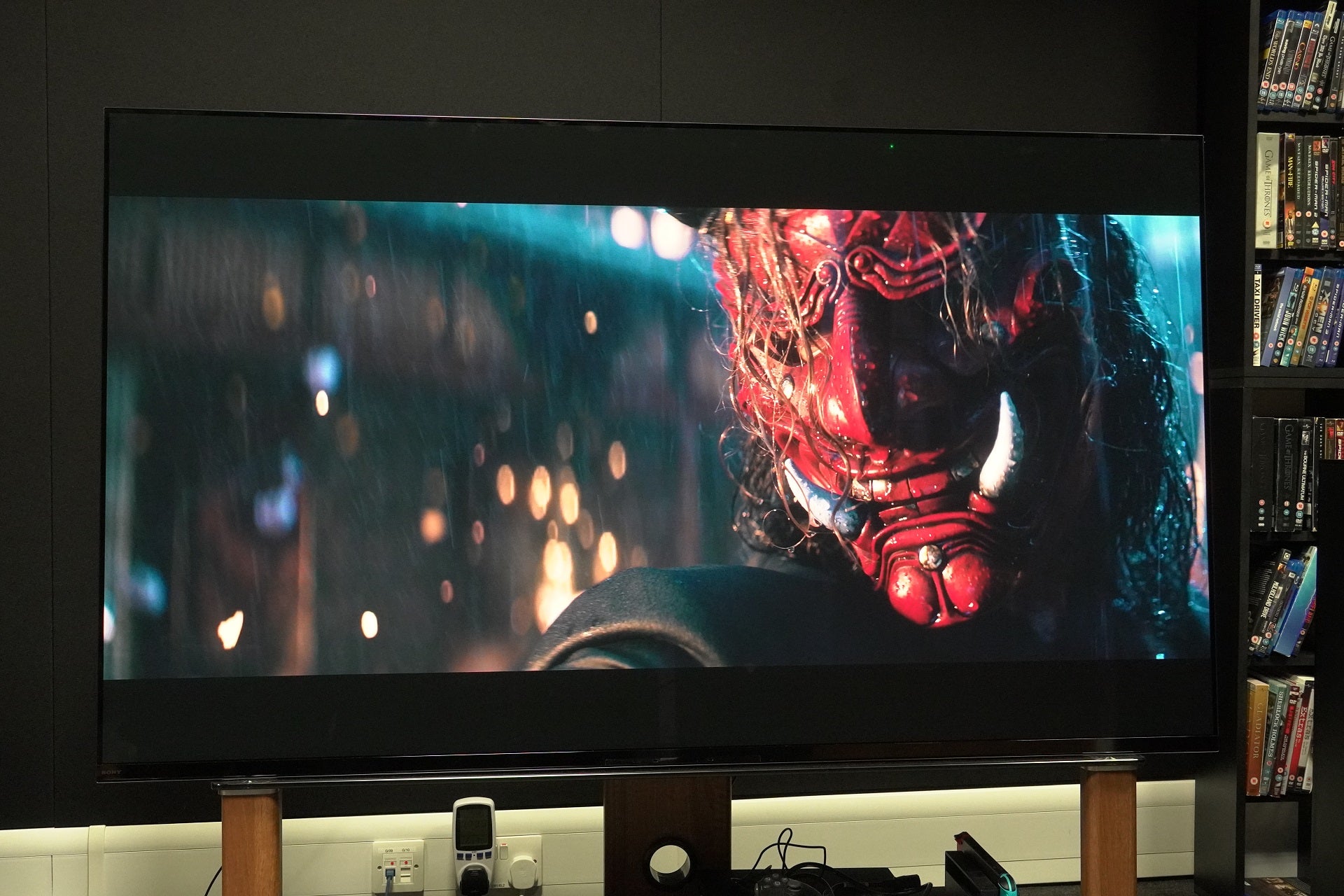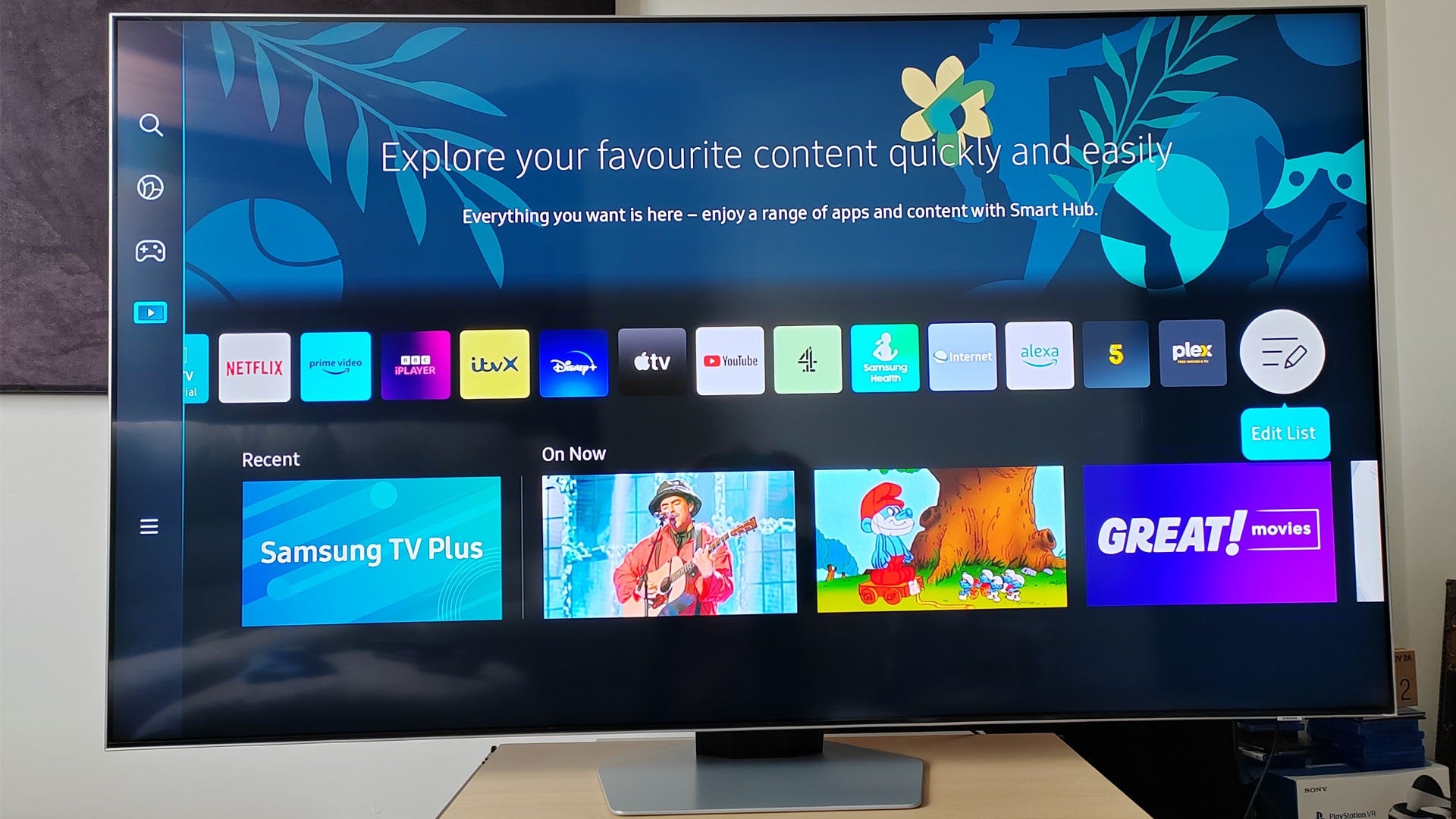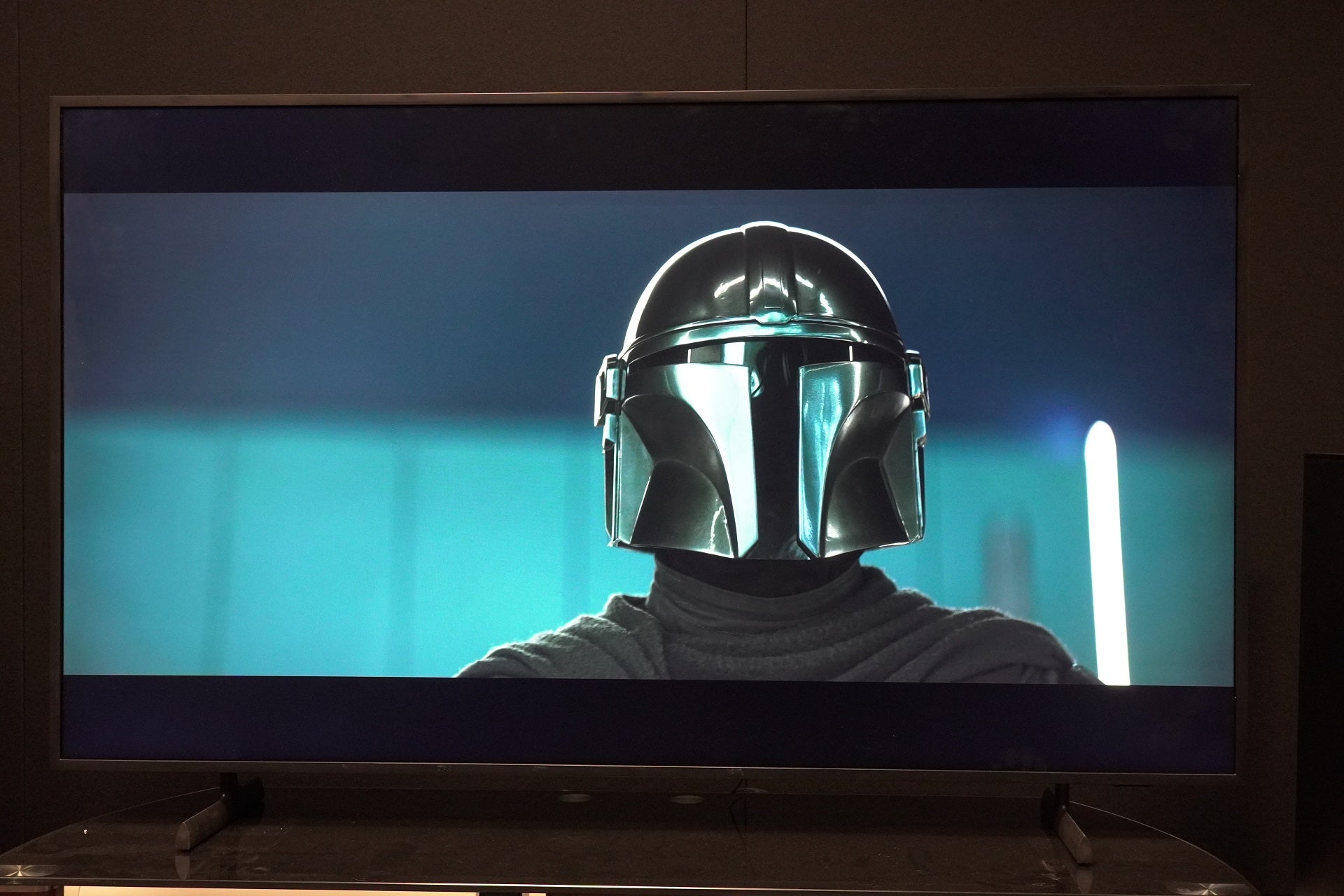Samsung QE65QN800B Review
Big screen, big resolution, not-so-big price…
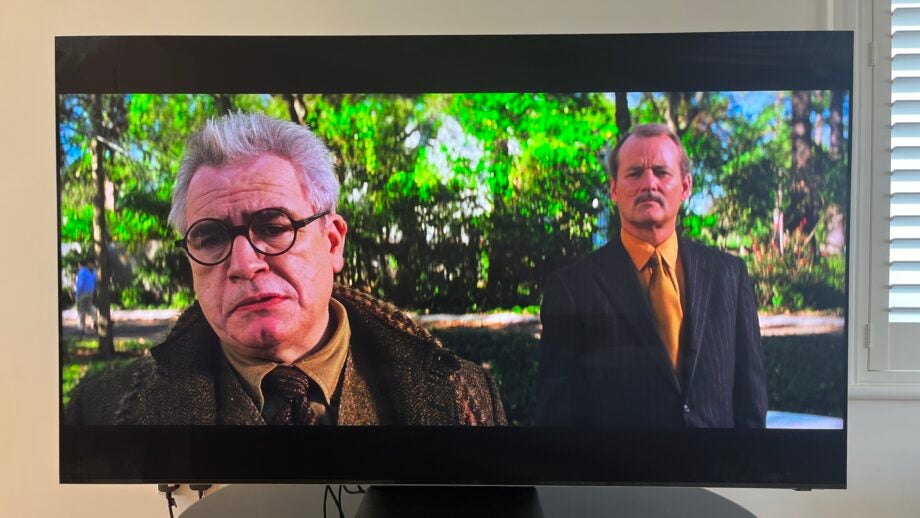

Verdict
The Samsung QE65QN800B is an extraordinary watch in the right circumstance – it’s just that those circumstances are still rather thin on the ground
Pros
- Corking picture quality with native 8K content
- Great gaming compatibility
- Slim and wall-hangable, thanks to One Connect box
Cons
- Has limits to its upscaling ability
- No Dolby Vision HDR
- Some backlighting woes
Key Features
- One Connect boxExternal box holds all the TV’s connections
- InterfaceTizen smart TV OS
- Audio4.2.2 Dolby Atmos system
Introduction
Of course, the idea of an 8K TV is alluring. After all, who doesn’t want all the detail, all the crispness of images, all the realism the format provides?
But let’s face facts: native 8K content is currently even harder to come by than a Prime Minister who’s served a full term. So is there, in fact, any point to owning an 8K TV? Even one as temptingly priced as this one?
Availability
- UKRRP: £2699
- USARRP: $3499
- EuropeRRP: €3799
- CanadaRRP: CA$4199
- AustraliaRRP: AU$4495
The Samsung QE65QN800B 8K Neo QLED TV is on sale and in the UK it costs £2699 or thereabouts. That equates to $2799 in the United States and AU$4499. Of course, if the 65-inch screen-size a bit on the tentative side, there’s a 75-inch model that’s available for £3999 / $3499 / AU$6499, or a gargantuan 85-inch alternative that sells for £4399 / $4499 / AU$8999.
You can buy a 65-inch TV from any number of reputable manufacturers for this sort of money, of course – but they’ll all be 4K resolution rather than the 8K of the 65QN800B. It’s at this point, though, that I’m obliged to point out that it’s not how many pixels you’ve got – it’s what you do with them…
Design
- Just 17mm deep
- One Connect box
- Compact pedestal stand
Viewed from dead ahead, the QN800B is everything you want your new TV to be – screen, mostly. The bezels that surround it are minimal, even the one across the bottom which incorporates IR sensor, mics and some very discreet branding.
And when seen in profile, the Samsung is even more striking – it’s a fraction over 17mm deep. And that’s a consistent depth – none of your OLED TV slimness until it gets quite fat nonsense here. So as long as your wall can handle the 23kg weight, the QN800B is ideal for hanging.
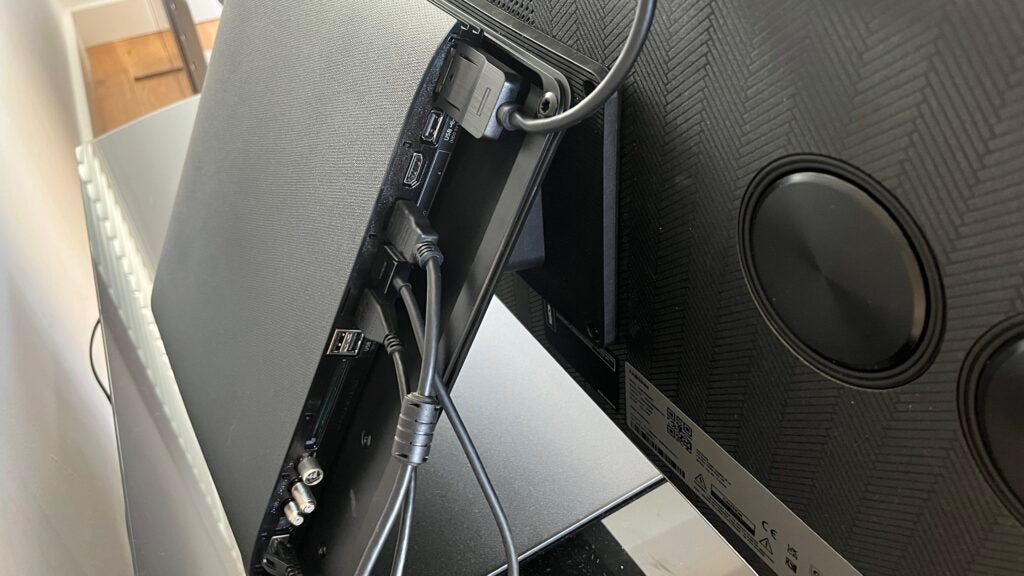
Even more so when you consider the One Connect box, in fact. The QN800B keeps all its physical inputs – including mains power – away from the chassis itself and in a separate box. The box needs connecting to the screen itself, of course – but when the TV is on the wall there’s only one slim cable to conceal.
And if you decide against wall-hanging and put the Samsung on its sturdy (8kg) central pedestal instead, there’s a place at the back of the stand for the One Connect box to rest. Samsung provides two lengths of connecting cable, so things can be kept as neat and tidy as possible.
Once the Samsung’s in position, all is well – it’s robustly put together, as you’d expect. But if you’re the one who put it there, you won’t fail to notice how low rent some of the plastics used in its construction feel, nor the remarkable amount of flex in the chassis itself.
Interface
- Two remote controls
- Can be operated via SmartThings app
- New smart interface
You can choose between a pair of remote control handsets, the Samsung SmartThings app or voice interaction to control the QN800B. One of the remotes is a full-function number with a great many buttons on it, while the other has just the most usual controls and is a lot nicer to use for it – and it’s solar-powered, too, which is nice.
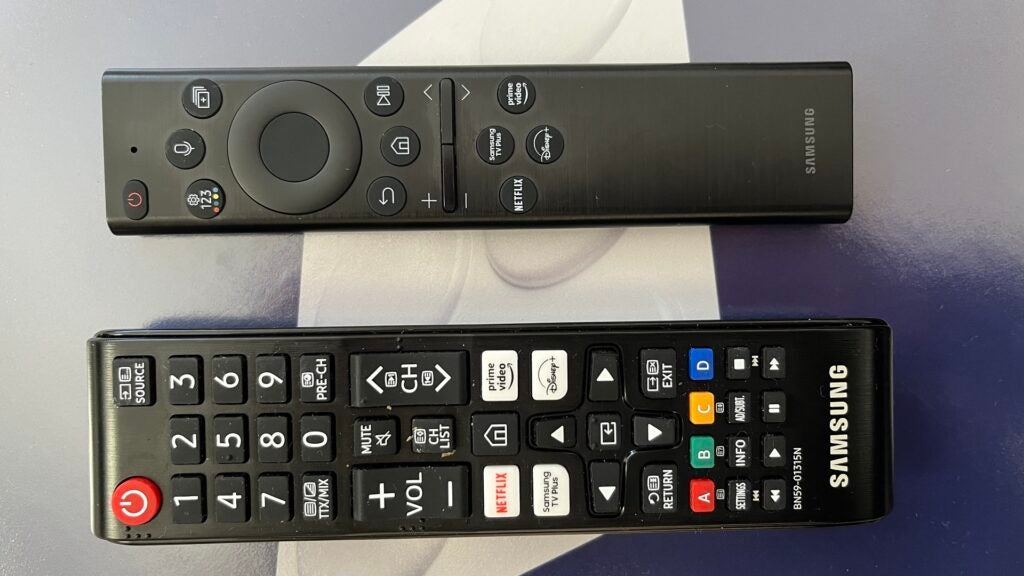
The app is clean, logical and extensive – and it allows you to integrate your TV into your wider SmartThings ecosystem, should you have one. And the TV responds quickly and reliably to voice commands, no matter if you’re using Amazon Alexa, Google Assistant or – gulp! – Bixby.
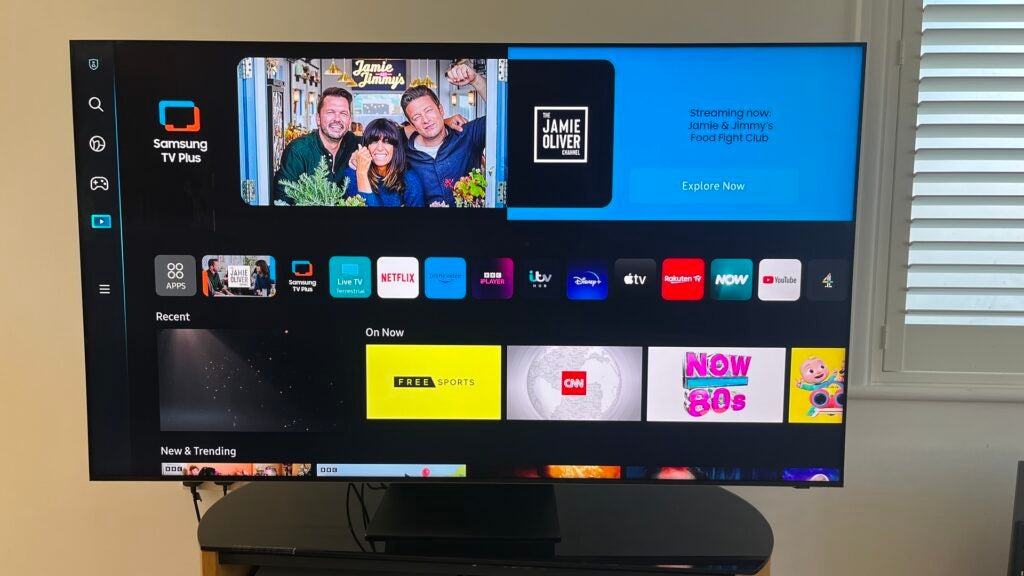
Your control option of choice puts you in charge of a Tizen-derived smart TV interface that isn’t quite as smart as it thinks it is. It’s packed with all sorts of catch-up and streaming service apps, of course (including YouTube, which is about the only place you’ll find native 8K content at the moment, and Samsung’s own free TV Plus) – but it hogs the majority of the screen, and it takes an eternity to start recommending things that bear the slightest resemblance to anything you may have actually watched.
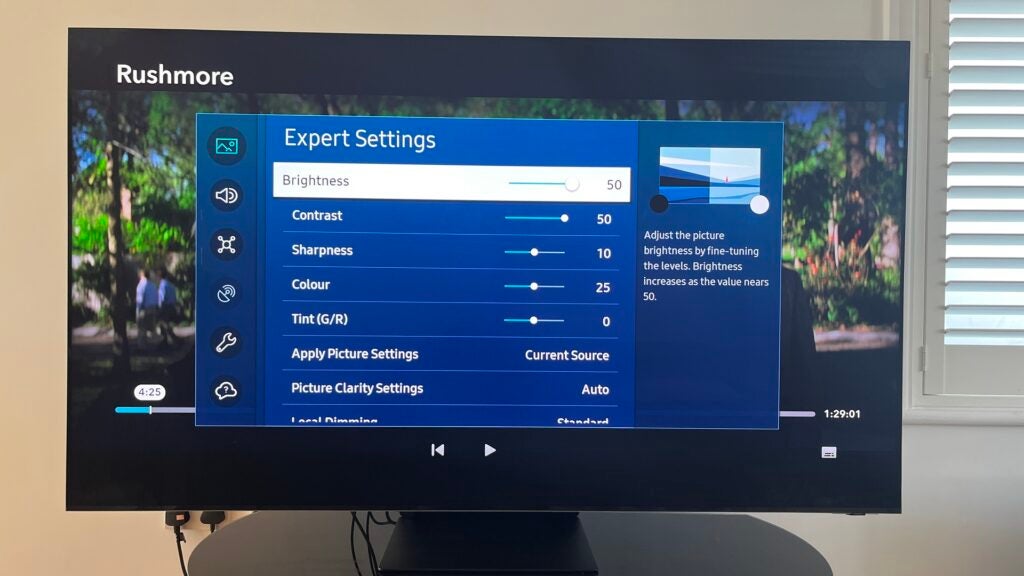
The screen’s set-up menus, on the other hand, are a model of clarity and brevity. Inveterate tweakers will find enough sub-menus to keep them happy, sure, but those of us who want to land on a pleasing picture balance inside ten minutes are catered for too.
Features
- 8K resolution
- Mini LED (or Neo QLED if you insist) configuration
- 4.2.2 Dolby Atmos-compatible audio system
Your 4K TV has a picture made up from around 8.3m pixels. The 8K QE65QN800B has, by way of contrast, something like 33.2m pixels to work with – and so the potential for detail, sharpness and all-around realism is obviously much greater with this 8K resolution.
The Samsung uses an LCD panel, backlit using Mini LED technology – the company likes to refer to it as Neo QLED. No matter what you call it, though, it means a huge number of very small LEDs providing the backlighting – and because they’re so small and so numerous, the backlighting can be more accurately targeted.
Which should mean better contrasts as well as greater backlighting precision. It’s a VA panel, which doesn’t automatically promise a great off-axis viewing experience – but Samsung has deployed its Ultra Viewing Angle Anti-Reflective technology here in an effort to mitigate the viewing issues and reduce the reflectivity of the screen at the same time.
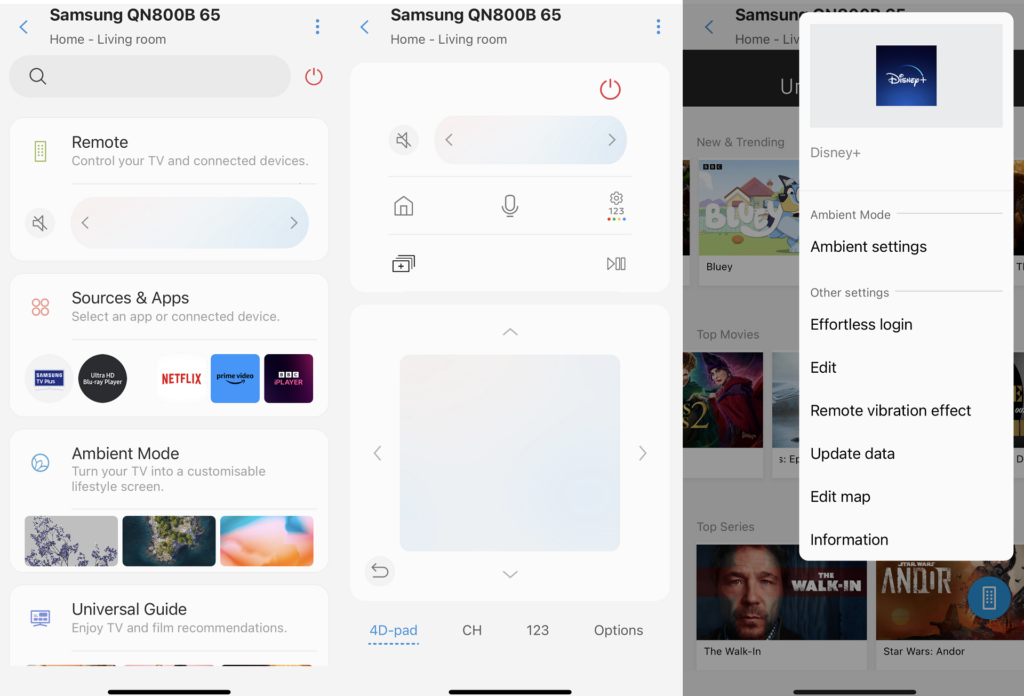
The One Connect box is home to four HDMI 2.1 sockets (one with eARC capability), three USB inputs, one RF and two satellite TV aerial posts, Ethernet and a digital audio output. Wi-Fi and Bluetooth 5.2 are available for wireless connections. All four of the HDMI inputs are at full-on 48Gbps 2.1 standard, which means compatibility with 4K/120Hz, VRR, ALLM, AMD FreeSync Pro and all the other stuff on which a current-gen games console thrives. Samsung reckons latency is below 10ms when running 4K/60Hz, which is plenty quick enough for even the most demanding gamer.
As has long been the case with Samsung HDR TVs, the QN800B doesn’t support Dolby Vision HDR. HLG, HDR10 and Adaptive HDR10+ dynamic metadata standards are on board, of course – but the lack of Dolby Vision compatibility is an omission that’s worth bearing in mind, particularly if you’re a DIsney+ or top-tier Netflix subscriber. Filmmaker mode is here, though, in case you’re a) a cinema purist or b) curious to know what it’s like to have cataracts.
Samsung is cool with Dolby Atmos audio, though, which kind of makes the Dolby Vision omission seem even more wilful. The QN800B has a 4.2.2 speaker arrangement (some of it is visible on the rear of the screen), driven by a total of 70 watts of power. It’s laid out to deliver some of the height and width a Dolby Atmos soundtrack offers, and it also features Samsung’s Object Tracking Sound+.
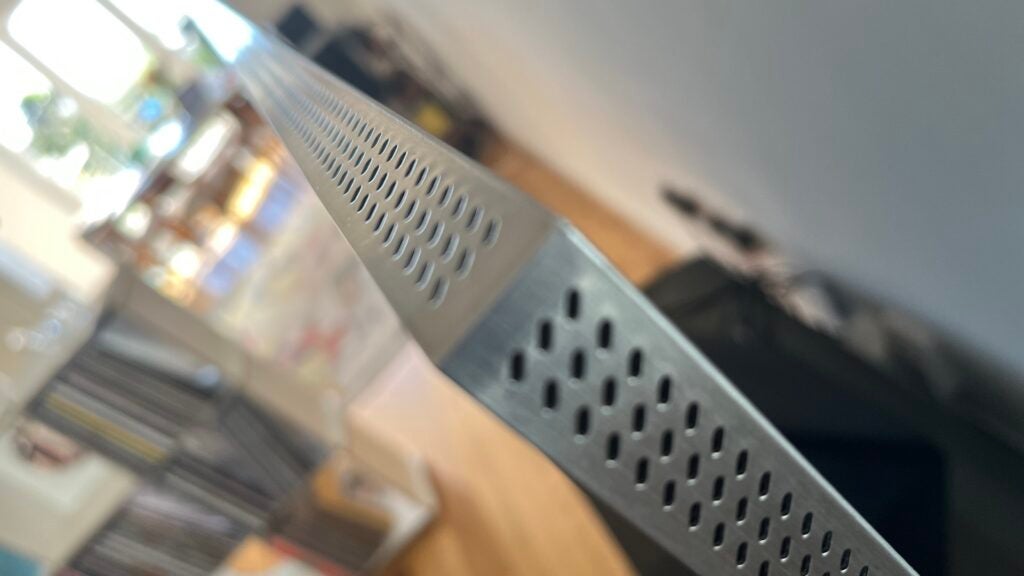
This seeks to steer sound in response to on-screen movement and has proved reasonably successful in previous Samsung screens. And on top of this the QN800B is compatible with Samsung’s Q Symphony technology that allows the screen’s audio system to join in with an appropriate Samsung soundbar rather than be overridden by it. It’s safe to say the QN800B has about as thorough and extensive an audio offering as any TV around.
Picture Quality
- Extraordinary 8K picture quality
- Very watchable 4K images
- Can struggle to upscale sub-4K content
The first thing any sensible QN800B owner will do is fire up the YouTube app and get some native 8K content streaming. You’re restricted to lingering long shots of landscapes, or flora and fauna – but it all looks amazing. Crisp, detailed, colourful, naturalistic, with wide contrasts and lovely depth of field – you name it, 8K content on an 8K display looks the business.
The problem with this stuff is that it’s boring. When you move to the 4K content you might actually be interested in watching, the Samsung still has a lot of picture-making ability to recommend it – but it’s not exactly flawless. Stick on a 4K UHD Blu-ray remaster of Kubrick’s 2001: a Space Odyssey and all becomes clear.
As far as positives go, the QN800B does agreeable work with both white and black tones. The darker scenes (of which there are plenty) are properly dark, with plenty of detail and variation on display, and the screen rejects the sort of crushing less capable display indulge in. At the other end, white tones are bright (altogether too bright until you get into the set-up menus), fairly clean and equally detailed. So contrasts are almost always wide and quite dynamic.
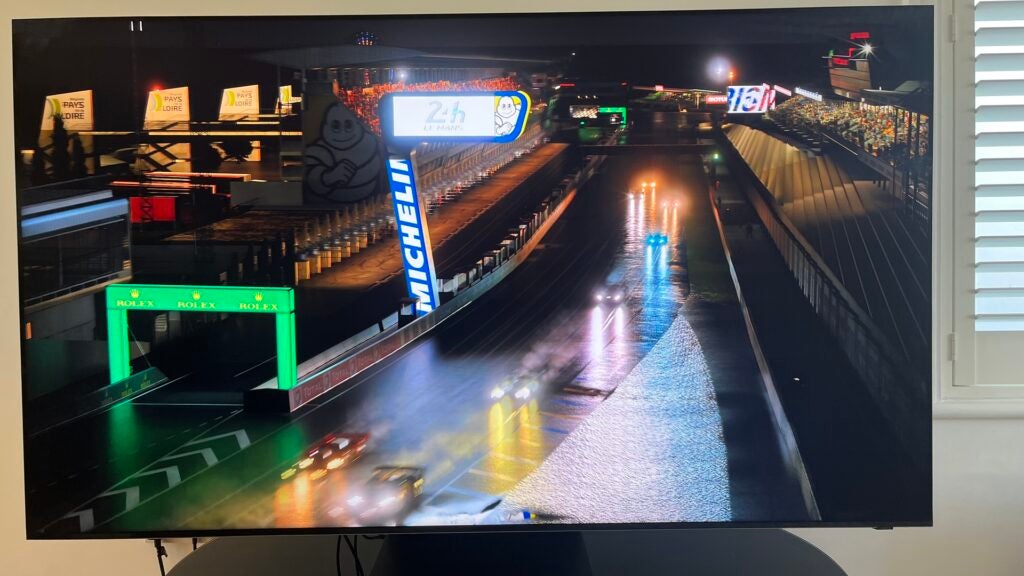
That punchy brightness is restricted when small white details are shown against predominantly black backgrounds, though. If it’s an effort to prevent backlight haloing around the little white areas it makes sense, but it’s an intrusion into your viewing experience for sure. And it’s not as if the Mini LED backlighting here is entirely consistent, either – the screen is darker in the middle than it is at the edges.
The Samsung does good work with colours – the palette is simultaneously vibrant and naturalistic, and extremely wide-ranging. Edge definition is crisp, depth of field is considerable, and motion control (once you’ve switched on LED Clear Motion and resigned yourself to the mild soap opera effect this introduces) is good too. The most complicated scenes can look a little over-processed, it’s true, but overall, the QN800B’s Neo Quantum Processor 8K is a very accomplished upscaler of 4K content.
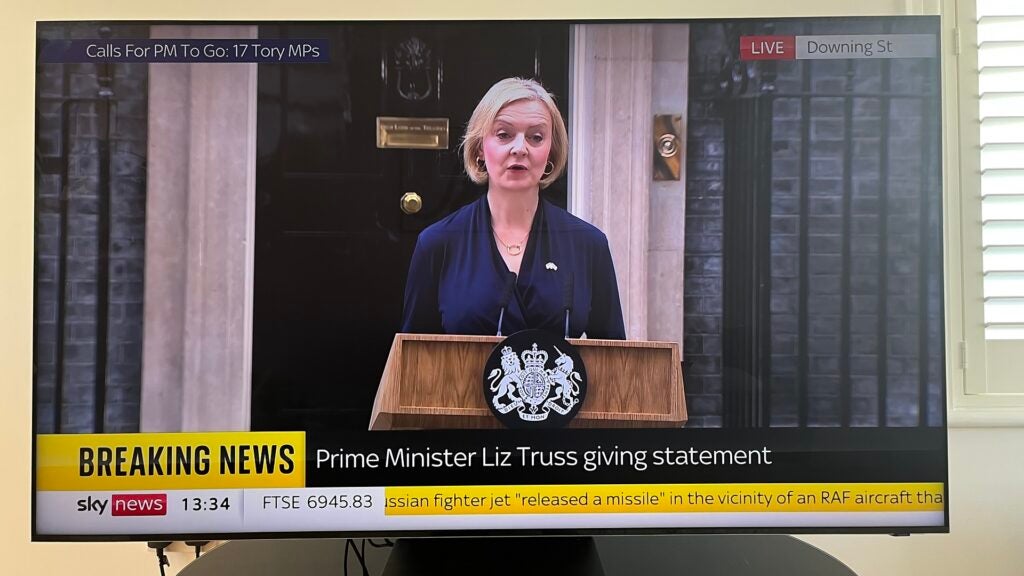
But if you watch a lot of stuff of lower resolution than this – and let’s not forget, that’s basically all broadcast TV and the majority of catch-up services – you need to know there are limits to what the Samsung can do with it. 720p content, for example, looks soft and indistinct, with little detail and not much in the way of tonal variation. It’s hardly surprising, of course – turning less than 1m pixel’s-worth of information into over 33m is quite an ask. But this is what ownership of an 8K display currently means…
Sound Quality
- Open, informative midrange
- Wide, fairly tall presentation
- No low-end presence to speak of
There’s no arguing with the effort Samsung has made with the QN800B’s audio system – and it’s a fair bit more engrossing and all-around listenable than many an alternative TV I could mention. There’s real width to the sound it serves up, a hint of height to Dolby Atmos soundtracks, and the OTS+ technology proves its worth too.
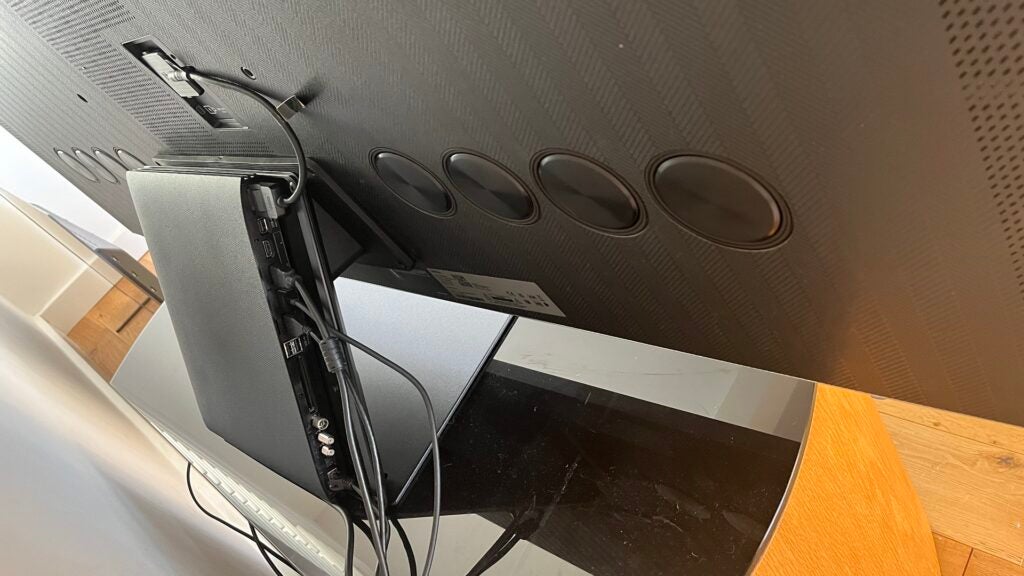
The midrange, so crucial to the audio experience of more-or-less any movie or TV programme, is distinct and spacious, with a nice tonal balance and plenty of detail to hook you in. The top end, too, is quite poised and open – or, at least, it is unless you really decide to up the volume levels. Predictably, the bottom of the frequency range is less successful – it’s a little boneless, lacks presence and doesn’t like big dynamic shifts at all.
Latest deals
Should you buy it?
You’re certain 8K is going to be a thing. The 8K content that’s currently available looks great, but it’s not all that involving
You watch plenty of sub-4K content. The Samsung’s a very capable upscaler, but naturally it has its limits
Final Thoughts
I’m always grateful to early adopters – after all, if it wasn’t for you guys the rest of us wouldn’t get exciting technologies at realistic prices. But although the QN800B is very realistically priced, it’s nevertheless a product that’s waiting for a tomorrow that may well never come…
How we test
We test every television we review thoroughly over an extended period of time. We use industry standard tests to compare features properly. We’ll always tell you what we find. We never, ever, accept money to review a product.
Find out more about how we test in our ethics policy.
Tested for more than a week
Tested with real world use
FAQs
The QN800B 8K TV supports Dolby Atmos soundtracks through the TV’s speaker system.
Full specs
Sustainability
Trusted Reviews’ holds the fact that global warming is not a myth as a core value and will continuously endeavour to help protect our planet from harm in its business practices.
As part of this mission, whenever we review a product we send the company a series of questions to help us gauge and make transparent the impact the device has on the environment.
We currently haven’t received answers to the questions on this product, but will update this page the moment we do. You can see a detailed breakdown of the questions we ask and why in our sustainability info page.


